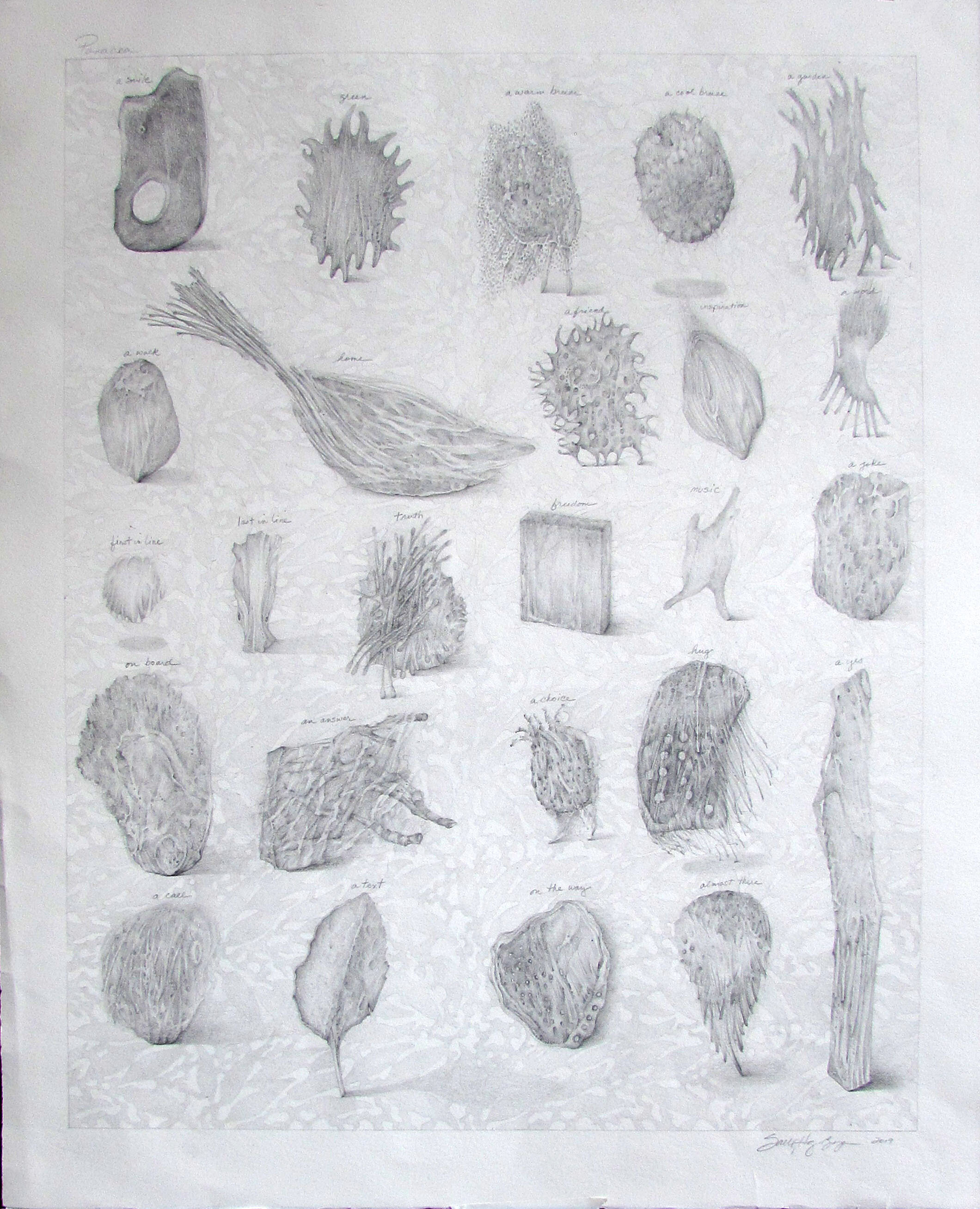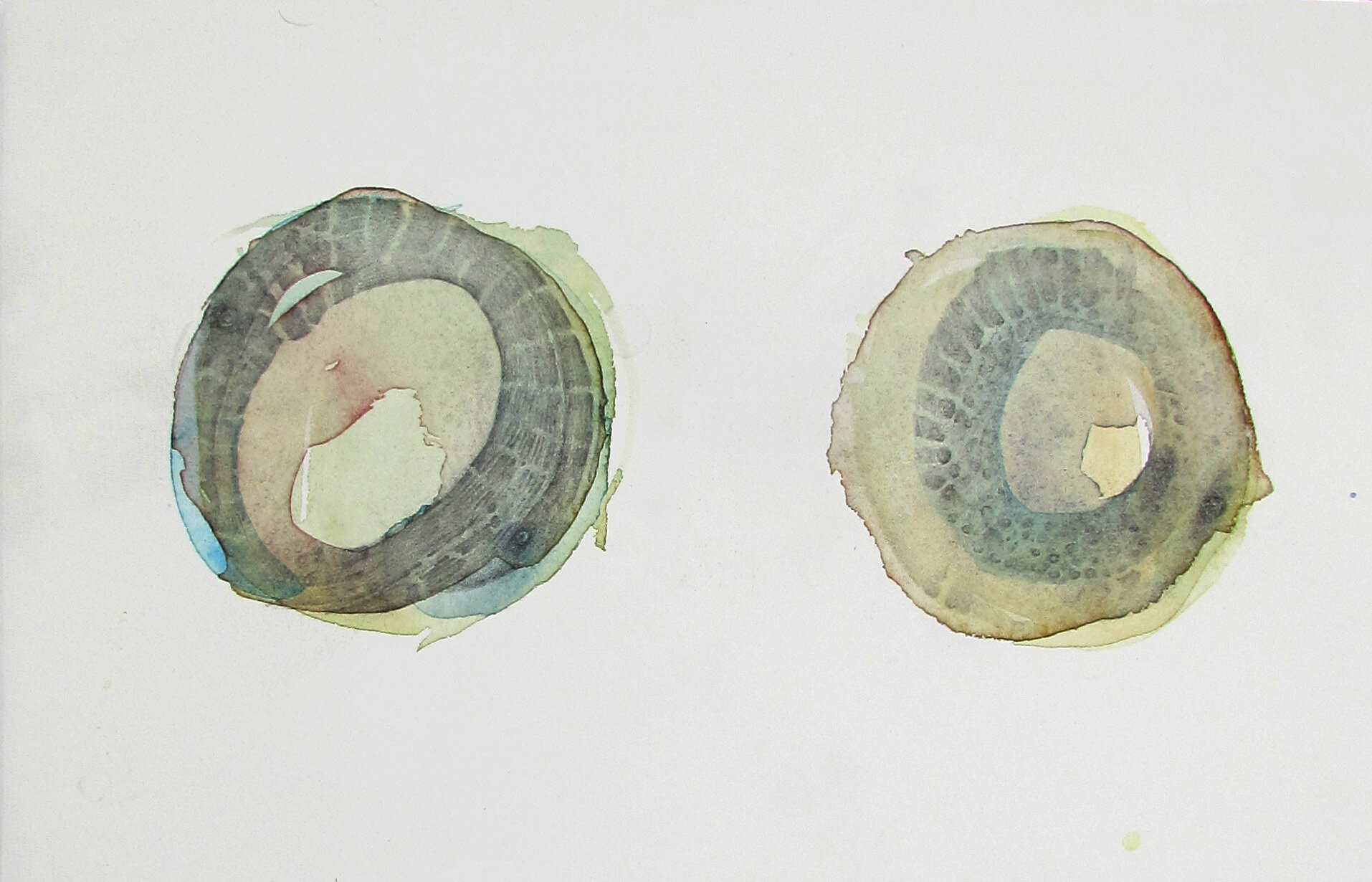Artist Statement
Mankind’s Mischief
Athenaeum Music and Arts Library
La Jolla, California
March 13, 2020 - May 2, 2020
The Longest Running Show that Nobody Saw — Due to Covid this show had a small Opening Reception, a very low turnout for the Artist Walkthrough and was on display in a closed gallery until November of 2020.
This body of work explores my inevitable inspiration by the collections of the largest botanical library in the world, the LuEsther T. Mertz Library at the New York Botanical Garden (NYBG) in the Bronx, New York. My art is a synthesis of my inspiration from the collections with reflections of my past and present experiences with people, places and things. Since 2013 when I started working in the library it has been a delight and challenge for me to discover, reflect, research, and draw my way around the botanical kingdom. The natural world has always influenced my work but since being immersed in the beauty and collective knowledge of the Library I can’t help but interpret it in new ways and share my perceptions. Plants have their way of twining, growing and enveloping the world around them while we have a history of manipulating the plant world to our own gains. I have used flora in ornament and pattern but I let the plants be the forefront of my work. While living on the east coast I have become enamoured with the changing seasons, the tall trees, and of the diversity of the flora and fauna. Whether introduced or endemic every plant has a story to tell. My immersion in the libraries’ collections has made the connection to the world around me even stronger. I see more, feel more, and hear more than I ever have.
I have always been a collector from both the natural world and the tossed and found. I have fancied seed pods and sea glass, seaweed and rusted wire. I myself exploit the world around me but I also clean it up. Imagery that I discover through the library has made a deep impact on my work. To open old journals or books and carefully unveil delicate botanical illustrations whose colors are as vibrant as the day they were created is always a thrill. There is also the possibility that no one has looked at these particular images in decades. I feel as if these images are a gift from the artist—and they have been given another life. Reprints with crumbly paper that have aged to a tea colored brown reveal intricate ink drawings of microscopic creatures and complex charts and diagrams. Most of the time I don’t know what treasures lie between the covers. One of the books I have discovered was a subjoyned attachment from 1681 called The comparative anatomy of stomachs and guts by Nehemiah Grew M.D. My version of these interior organs have shown themselves in my work.
Most of this body of work was created with pencil. It is my favorite medium because it doesn’t make me choose colors. I like to let the pencil find its own way on a variety of paper types and textures. I have drawn a bibliography for this show because these works have informed my art and this provides a tactile connection to their words.
The science of botany is forever growing and evolving, be it from collecting in the wild to research in the Herbarium. We need plants much more than they need us. In many ways the more we have exploited the natural world to our benefit the more the natural world has suffered. Finding a sustainable path and a deeper understanding of our dependence on a healthy living world is key to the worlds’ survival. There is a long history of sustainability and a world of knowledge that has been forgotten. Even seeing plants in the environment is a pasttime that is enjoyed by so few and “is so widespread that Elisabeth Schussler and James Wandersee, a pair of US botanists and biology educators, coined a term for it in 1998: “plant blindness”. They described it as “the inability to see or notice the plants in one’s own environment”.
My view of the natural world has widened through my position at NYBG. Robin Wall Kimmerer wrote in her book Gathering Moss “...with words at my disposal I can see more clearly.” There is so much more for me to discover, explore and share both in the Garden and my natural world.
The title of the show “Mankind’s Mischief” , references a quote made by Alexander von Humboldt, 1769-1859 a notable Prussian geographer, explorer, and naturalist. Humboldt was greatly inspired by nature and was one of the first to understand its complex interconnectedness. As early as 1801, Humboldt gave a dire warning of “man’s disturbance of nature’s order.”



































